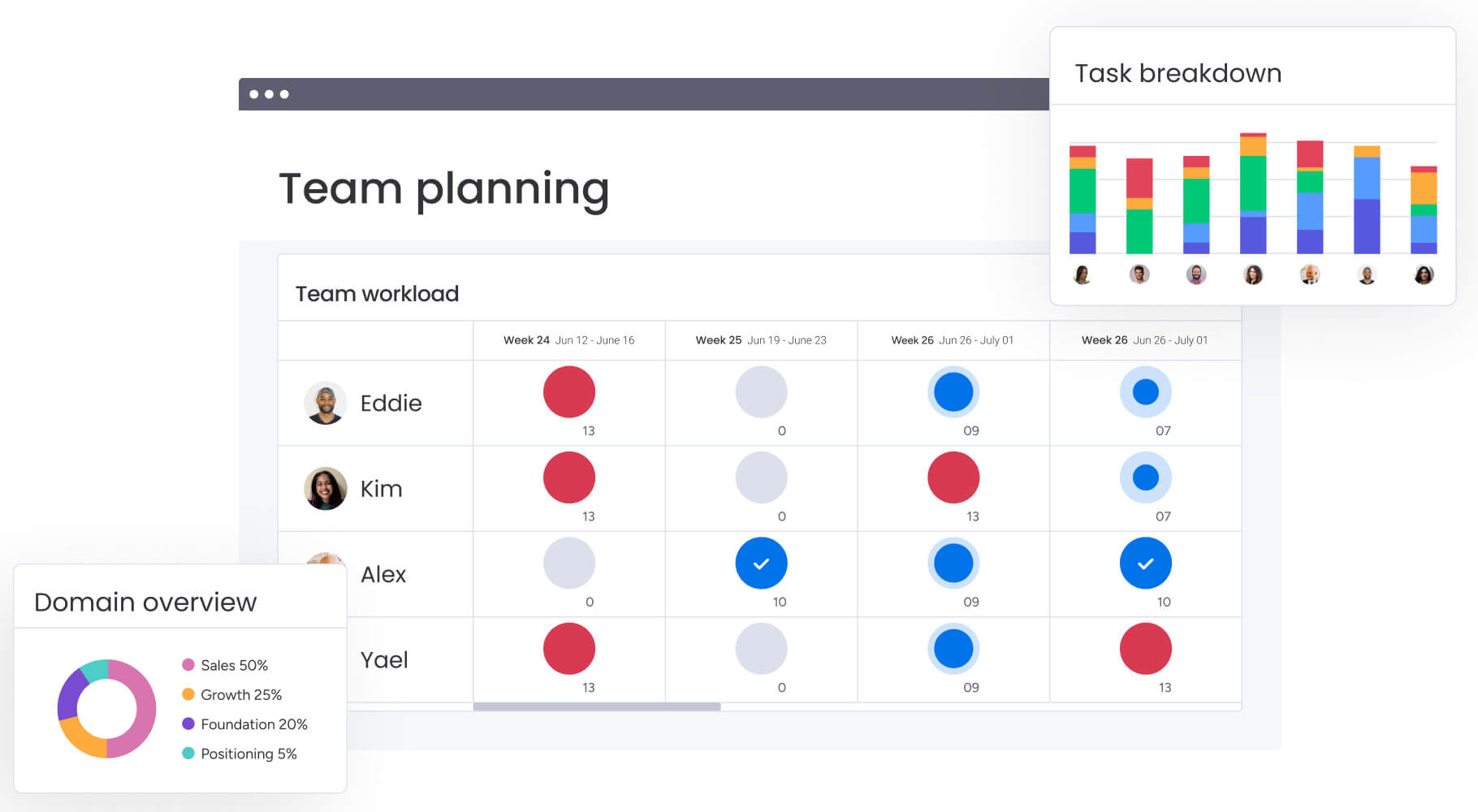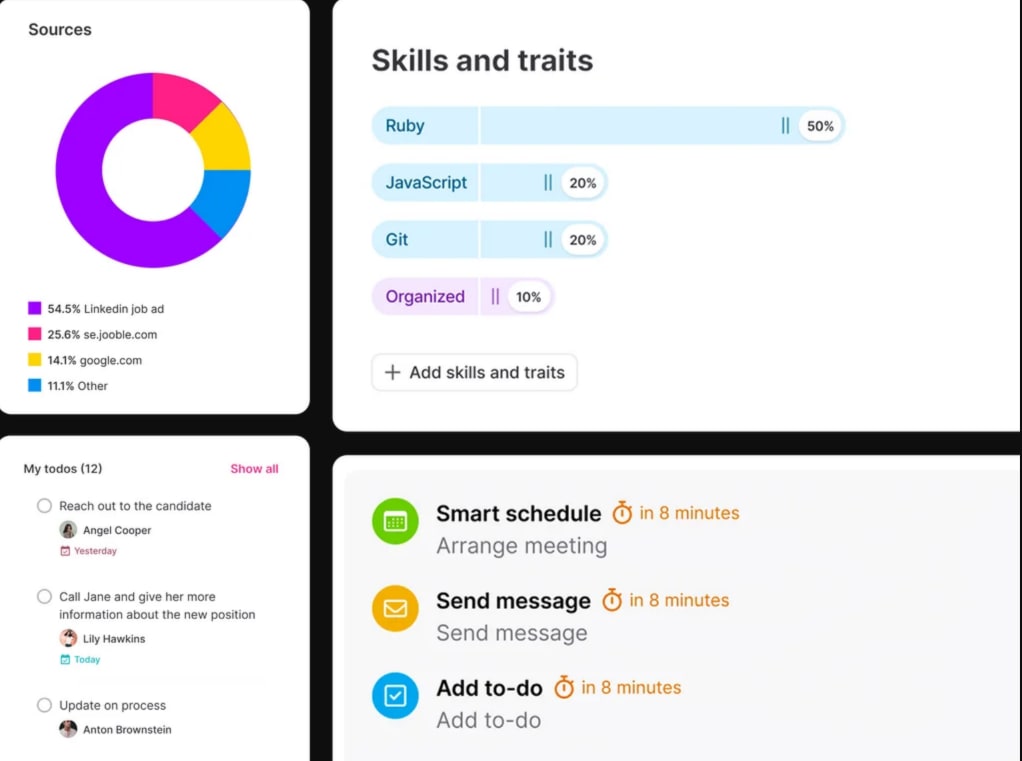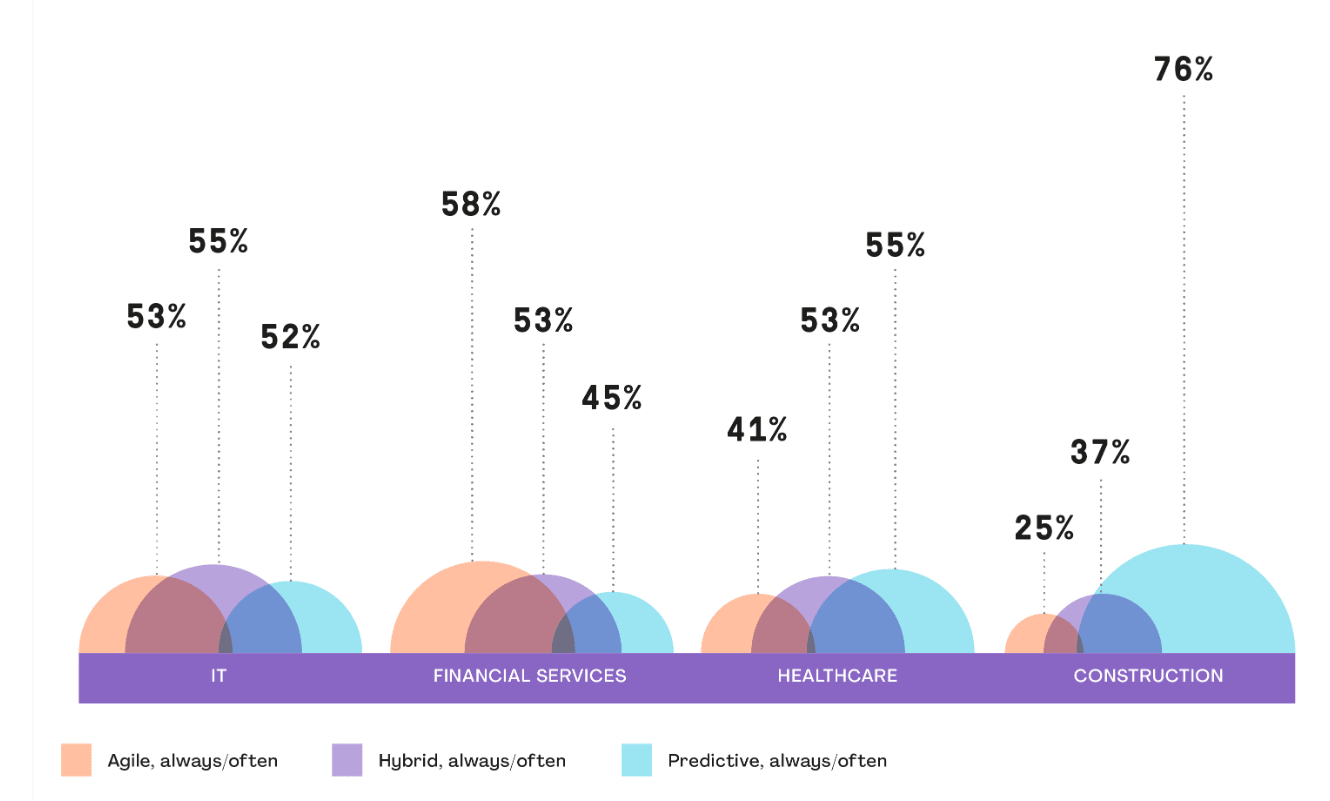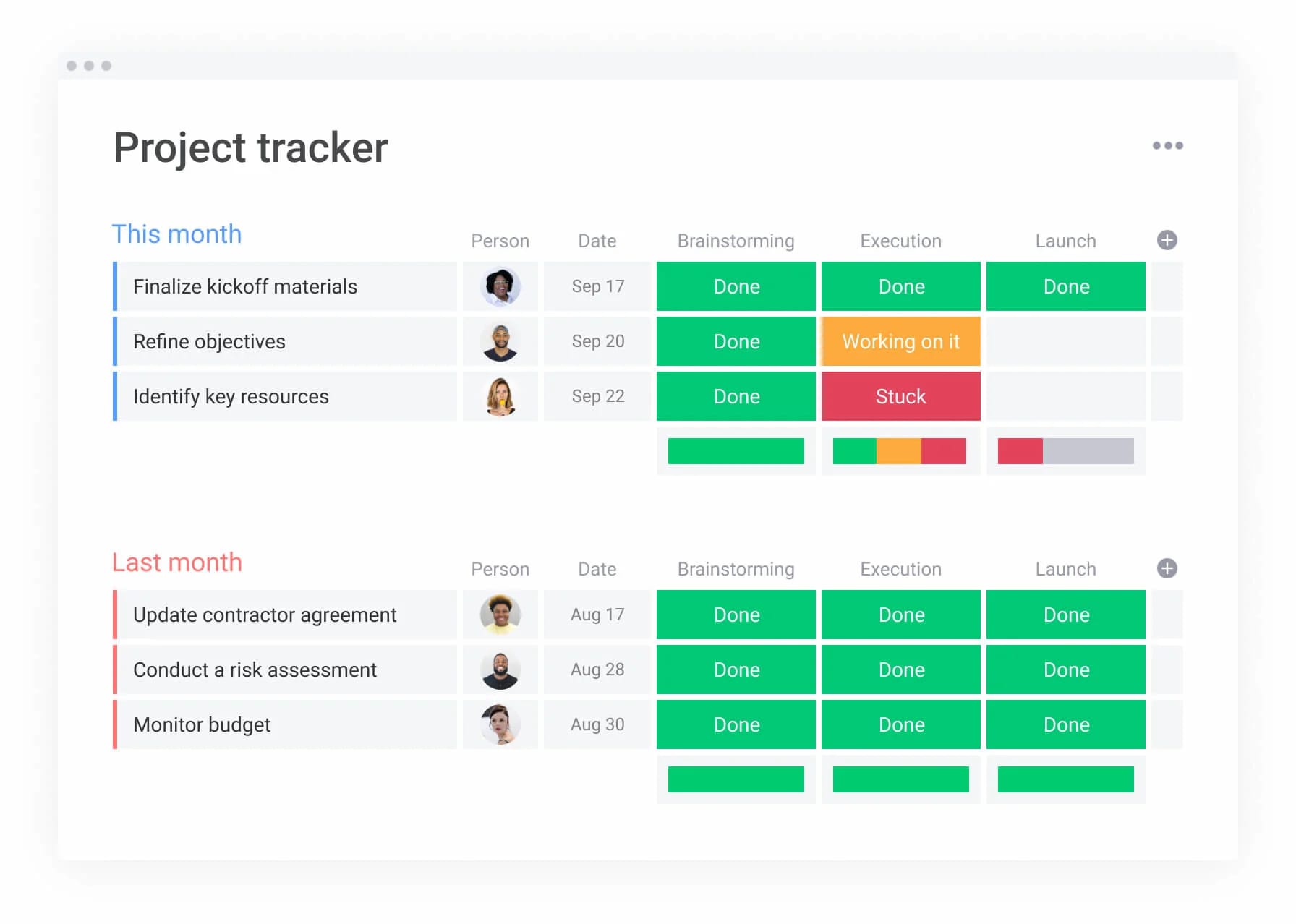When crisis hits, the first few hours determine your organization’s fate. A coordinated response protects your reputation and bottom line, while reactive approaches amplify damage. The difference? A solid crisis management plan.
This plan serves as your emergency playbook, transforming chaos into structured action. By establishing clear roles, procedures, and communication protocols beforehand, your team can make decisive decisions when it matters most.
This helpful post outlines how to build a resilient crisis management strategy — from forming your response team to identifying risks and testing your plan. Take a few minutes to read this guide and you will also discover how to leverage work management platforms to coordinate teams and automate critical workflows during emergencies.
Key takeaways
- Test your plan regularly: simulations and drills reveal weaknesses before real crises do, helping teams respond with confidence.
- Define clear activation triggers: specific conditions and documented response steps prevent confusion and guide quick action.
- Establish strong communication channels: consistent messaging and defined points of contact keep everyone aligned during high-pressure moments.
- Use monday work management to stay coordinated: automated alerts, shared dashboards, and connected workflows maintain visibility when timing matters most.
- Ensure information accessibility: store critical procedures in multiple formats and locations so teams can act even if systems go down.
What is a crisis management plan?
A crisis management plan is your organization’s playbook for handling unexpected events that threaten operations, reputation, or safety. This means having documented procedures, assigned roles, and communication strategies ready before emergencies strike.
However, while most executives agree resilience is a top priority, recent McKinsey research highlights a critical gap between intention and readiness. The study shows only about 30% felt well prepared for modern disruptions.
Think of it as your emergency response blueprint. While regular business planning focuses on growth and daily operations, a crisis management plan zeroes in on urgent situations — data breaches, natural disasters, product recalls, or public relations disasters that demand immediate action.
Understanding crisis management planning
Crisis management planning is the process of preparing for potential emergencies before they happen. Creating a risk management plan ensures your organization can proactively address threats and reduce their impact. You identify risks, create response procedures, and assign clear responsibilities so everyone knows their role when pressure mounts.
The planning process brings together leaders from communications, legal, HR, operations, and other key departments. Each team contributes their expertise to build comprehensive response strategies that protect both immediate operations and long-term business health. Similarly, developing a change management plan can facilitate major organizational shifts prompted by a crisis.
Key benefits of having a crisis plan
Organizations with solid crisis plans respond faster and recover more smoothly when emergencies hit. These benefits extend beyond the immediate crisis to strengthen overall business resilience.
- Financial protection: quick response times minimize revenue loss and keep mission-critical functions running.
- Reputation management: consistent messaging maintains stakeholder trust during difficult periods.
- Operational continuity: pre-established procedures help teams maintain essential services even when normal operations are disrupted.
Common types of organizational crises
Different organizations face different threats, but most should prepare for these common crisis categories:
- Operational crises: supply chain breakdowns, equipment failures, workplace accidents, or system outages.A recent example is the July 2024 incident where a flawed software update from a major cybersecurity provider triggered a global IT outage, disrupting businesses, hospitals, and financial institutions worldwide. In such situations, a disaster recovery plan template can help organizations quickly restore critical operations.
- Reputational crises: social media backlash, negative publicity, customer complaints, or executive misconduct.
- Financial crises: cash flow problems, market crashes, or unexpected expenses threatening stability.
- External crises: natural disasters, cyber attacks, or regulatory changes requiring coordinated response.

7 steps to create an effective crisis management plan
Building a comprehensive crisis plan takes systematic planning. These seven steps provide a framework you can adapt to your organization’s specific needs.
Step 1: form your crisis management team
Your crisis team needs representatives from key departments who can make decisions quickly. Clear roles prevent confusion when every minute counts.
Essential team members include:
- Crisis manager: coordinates overall response and makes final decisions.
- Communications lead: manages all messaging and media relations.
- Operations representative: maintains business continuity and allocates resources.
- Legal counsel: handles compliance and liability concerns.
- HR representative: focuses on employee safety and internal communications.
Step 2: identify and assess potential risks
Risk identification means examining what could go wrong. Look at both internal vulnerabilities like system dependencies and external threats like natural disasters. Another essential approach to staying prepared is creating a contingency plan for major risks.
Assessment helps you prioritize. Implementing a thorough risk management process also ensures continuous monitoring and mitigation. Evaluate each risk based on:
- Probability: how likely is this crisis?
- Impact severity: what damage could it cause?
- Detection capability: how quickly would you spot it?
- Response readiness: how prepared are you today?
Step 3: analyze business impact
Business impact analysis shows the true cost of potential disruptions. This helps leadership understand why crisis planning deserves resources and attention.
Examine both immediate impacts like revenue loss and longer-term damage like customer defection or regulatory penalties. Utilizing platforms like monday work management can help teams visualize these impacts through customizable dashboards that track risk assessments and potential consequences.
Step 4: develop crisis response procedures
Response procedures turn strategy into action. They should be specific enough to guide decisions but flexible enough for varying circumstances.
Key procedure elements include: Creating an action plan for each scenario, along with activation triggers, decision hierarchy, resource allocation, and timeline expectations.
- Activation triggers: conditions that launch crisis response.
- Decision hierarchy: who can authorize what actions.
- Resource allocation: how to deploy people and assets quickly.
- Timeline expectations: realistic timeframes for each phase.
Step 5: establish communication protocols
Communication protocols ensure consistent messaging during chaotic situations. Different audiences need different information delivered through appropriate channels.
Plan for three communication streams:
- Internal communications: employee updates, management briefings, board reports.
- External communications: customer notices, media statements, regulatory filings.
- Digital communications: website updates, social media responses, email campaigns.
Step 6: Document your crisis management strategy
Documentation makes your plan accessible when stress runs high. Store procedures in multiple formats and locations to ensure availability.
Effective documentation includes:
- Centralized storage: quick access for all team members.
- Multiple formats: digital and physical copies in different locations.
- Regular updates: quarterly reviews to keep information current.
- Version control: clear tracking of changes and updates.
Step 7: Test and update your plan regularly
Finally, testing reveals gaps before real crises expose them. Different testing methods serve different purposes: Incorporating scenario planning helps you more accurately anticipate various crisis scenarios. Additionally, establishing a fallback plan can ensure your team has a backup response if the primary strategy fails.
- Tabletop exercises: discussion-based scenarios testing decision-making
- Functional exercises: partial activation of specific procedures
- Full-scale drills: complete crisis simulation
- Post-exercise reviews: systematic improvement based on lessons learned.

6 critical components every crisis plan must include
Every crisis management plan needs a clear structure that defines how teams prepare, respond, and recover.
The components below outline the essential building blocks of an effective plan, from assessing risks and activating response procedures to maintaining communication and supporting recovery efforts. Together, they ensure your organization can act quickly, stay aligned, and resume operations with confidence.
Risk assessment framework
Your risk assessment framework provides structure for evaluating threats. Combine qualitative judgment with quantitative data to build comprehensive risk profiles.
Tailor the framework to your industry while keeping it flexible enough for emerging threats. Regular updates ensure relevance as conditions change.
Crisis activation triggers
Activation triggers are specific conditions that launch your crisis response. Clear triggers prevent delays and ensure teams mobilize when situations meet predetermined criteria.
Effective triggers specify severity levels, impact thresholds, and time constraints. They help teams distinguish routine problems from true crises.
Emergency contact directory
Effective crisis communication depends on having accurate, up-to-date contact information for key stakeholders. Each directory should include multiple ways to reach essential roles, such as phone, email, and text, along with designated backups to ensure no message goes unanswered.
A connected platform like monday work management keeps this information reliable and easy to access by automatically updating contact details and centralizing them in one place.
Response procedures and workflows
Detailed procedures guide teams through high-stress situations. Provide role-specific instructions for different scenarios and severity levels.
Balance detail with usability. Procedures should guide decisions without becoming too complex to follow during emergencies.
Internal and external communication plans
Communication plans address different stakeholder needs while maintaining message consistency. Include templates, approval processes, and distribution methods.
Transparent communication maintains confidence and prevents misinformation from spreading during crisis situations; this is a crucial point given that research finds only 61% of employees in large enterprises are satisfied with organizational transparency.
Post-crisis recovery process
Recovery planning starts during crisis response. Using a business continuity plan template can help you systematically address continuity tasks. Focus on returning to normal operations while capturing lessons learned.
Address business continuity, stakeholder updates, and process improvements based on crisis experience.

Building a high-performing crisis management team
Strong crisis teams balance broad representation with rapid decision-making ability. Success depends on having the right people in clearly defined roles.
Essential roles and responsibilities
- Crisis manager: leads coordination, makes final decisions, interfaces with leadership.
- Communications lead: develops messaging, manages media, monitors public sentiment.
- Operations representative: maintains continuity, allocates resources, manages logistics.
- Legal counsel: guides compliance, manages risks, handles regulatory requirements
- HR representative: ensures safety, manages workforce communications, coordinates support
Cross-departmental team structure
Crisis response requires input from multiple departments. Balance representation with manageable team size to maintain effectiveness under pressure.
Clear reporting relationships and decision authority prevent confusion when time is critical. Regular coordination identifies potential conflicts before crises test collaboration.
Training and preparedness programs
Teams need ongoing training to maintain readiness. Include awareness sessions, skill building, and scenario exercises that test coordination.
Regular refreshers ensure institutional knowledge survives staff changes and new members understand their crisis responsibilities.

Crisis management plan examples across industries
Every industry faces distinct risks, and effective crisis management depends on tailoring plans to those realities. Studying how different sectors prepare for and respond to disruption provides practical insight into building strategies that fit your organization’s unique challenges.
The following examples highlight how companies and sectors structure their crisis management plans to maintain stability, protect stakeholders, and recover quickly when unexpected events occur.
Corporate crisis management plans
Corporate plans address data breaches, executive misconduct, and financial irregularities. They emphasize stakeholder communication and regulatory compliance.
These plans include detailed strategies for investors, customers, employees, and regulators, with protocols for media attention and public disclosure.
Healthcare crisis response plans
Healthcare organizations coordinate with external agencies while addressing patient safety and public health implications. Plans must handle complex ethical considerations.
Protocols cover patient communication, staff safety, regulatory reporting, and coordination with public health authorities during outbreaks or emergencies.
Technology sector crisis plans
Technology companies face system outages, security breaches, and data privacy incidents. Plans address how quickly digital issues can escalate.
Emphasis falls on rapid technical response, digital customer communication, and coordination with cybersecurity teams and external experts.
Manufacturing crisis procedures
Manufacturing plans address equipment failures, supply chain disruptions, and workplace safety. They prioritize worker protection and operational continuity.
Detailed safety protocols, supplier communication procedures, and regulatory coordination help manage environmental or safety incidents.

How to test and maintain your crisis response plan
A crisis plan is only as strong as its last test. Regular practice ensures that teams stay prepared, procedures remain relevant, and potential gaps are addressed before real emergencies occur. Testing also builds organizational confidence, turning theory into practical capability.
The steps below outline how to keep your plan effective over time through structured simulations, consistent reviews, and measurable performance tracking.
Conducting crisis simulation exercises
Simulations provide realistic practice without actual emergency risks. Design exercises with clear objectives that challenge coordination and decision-making.
Include pre-exercise planning, scenario development, and structured debriefing to capture lessons and identify improvements.
Scheduling regular plan reviews
Crisis management plans must evolve alongside the organization. Regular reviews ensure strategies remain relevant as structures, risks, and responsibilities change. This is especially important given the perception gap around how effectively change is managed: while 45% of senior leaders believe their organization handles change very well, only 23% of individual contributors share that view.
Conduct a comprehensive review each year to evaluate all plan components, and schedule quarterly updates to address new risks, staffing shifts, or procedural adjustments that could affect response readiness.
Measuring crisis preparedness
Establish metrics to track readiness and improvement. Key indicators include response time, communication effectiveness, and plan adherence during exercises.
Benchmark against industry standards to understand relative preparedness and identify continued improvement areas.
Crisis management vs business continuity: key differences
Crisis management and business continuity share the same goal — keeping the organization stable during disruption — but they focus on different moments in the process. Understanding how they connect helps create a stronger, more resilient response strategy.
- Crisis management: focuses on the immediate response, guiding decisions and communication as the situation unfolds.
- Business continuity: keeps essential operations running during and after a disruption, reducing downtime and protecting performance.
- Timeline: crisis management plays out over hours or days, while business continuity extends into the recovery phase, lasting weeks or even months.
- Integration: when both work together, organizations can respond quickly, maintain stability, and return to normal operations with greater confidence.

Strengthen your crisis management strategy with monday work management
Effective crisis management depends on speed, clarity, and coordination — all supported by the right tools. The ability to automate tasks, maintain visibility, and keep teams aligned under pressure can make the difference between disruption and control.
With its connected workflows and real-time insights, the monday work management platform helps organizations respond faster, stay organized, and make informed decisions at every stage of a crisis. The features below outline how it supports structured, confident action when it matters most.
Automate crisis response workflows
Automation eliminates manual coordination and ensures consistent procedure execution. Trigger notifications, assign items, and update stakeholders automatically.
Automated workflows maintain consistency even when stress runs high and team members might overlook important steps.
Monitor risks with real-time dashboards
Real-time visibility helps leadership make informed decisions and coordinate resources. Access response status, resource allocation, and communication tracking instantly.
Live dashboards identify bottlenecks, track timeline progress, and ensure stakeholders receive appropriate updates throughout response activities.
Coordinate teams during critical events
Crises move fast, and effective coordination determines how well teams respond. Clear communication and shared visibility keep departments aligned and focused on the right priorities.
- Unify communication: centralize updates, discussions, and status tracking so everyone stays informed in real time.
- Maintain alignment: ensure each department understands its responsibilities and how tasks connect across teams.
- Share information instantly: use connected workspaces to eliminate silos and enable rapid decision-making under pressure.
By consolidating communication and collaboration in one place, monday work management helps teams stay organized, responsive, and confident when it matters most.
Build custom crisis management templates
Templates accelerate preparation and standardize processes across emergency types. Create crisis-specific workflows that activate quickly when needed.
Pre-built templates reduce setup time during actual crises and ensure all necessary response steps are included.
Ready to strengthen your crisis preparedness? Get Started with monday work management today.
Frequently asked questions
How often should organizations update their crisis management plans?
The standard recommendation is to update your crisis management plan at least annually, with additional reviews following organizational changes, actual crisis experiences, or shifts in the risk environment. Quarterly checks of contact information and key procedures help maintain readiness.
What is the difference between crisis management and disaster recovery?
Crisis management addresses immediate response to any disruptive event threatening operations or reputation. Disaster recovery specifically focuses on restoring IT systems and data after technical failures, whereas crisis management encompasses broader organizational response.
Who should lead an organization's crisis management team?
A senior executive with decision-making authority — often from operations, risk management, or executive leadership — should lead the crisis management team to allocate resources and coordinate with external stakeholders effectively.
How long does it take to develop a comprehensive crisis management plan?
Developing a comprehensive plan typically takes three to six months, depending on organizational size, complexity, and the thoroughness of the risk assessment, procedure development, team training, and initial testing.
What are the most critical mistakes organizations make in crisis planning?
Key mistakes include failing to test plans regularly, creating inadequate communication protocols, excluding key stakeholders from plan development, underestimating post-crisis recovery, and neglecting to update plans based on lessons learned.
Can small businesses benefit from formal crisis management planning?
Yes. Small businesses often have fewer resources for recovery, making formal crisis planning critical. They can adapt frameworks to focus on likely risks such as key person dependencies or technology failures.
 Get started
Get started 

